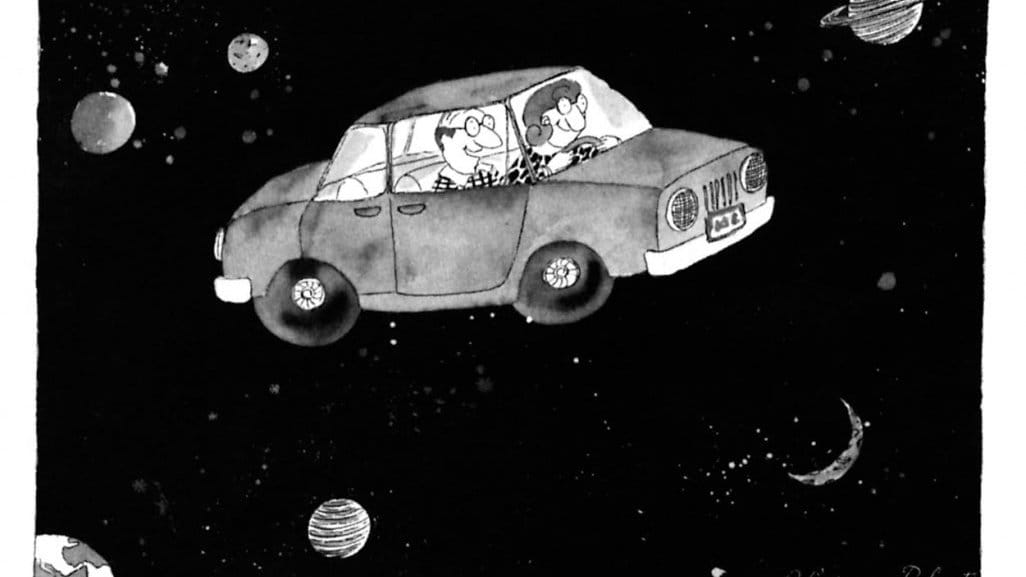Event
I Only Read It for the Cartoons: An Evening With (A Few Of) "The New Yorker's" Most Brilliant Artists

Amphitheater
209 East 23rd Street, 3rd floor, New York, NY 10010School of Visual Arts presents “I Only Read It for the Cartoons: An Evening With (A Few Of) The New Yorker's Most Brilliant Artists,” a panel discussion featuring New Yorker cartoonists Edward Koren, Lee Lorenz and Victoria Roberts. The event is moderated by writer and editor Richard Gehr and hosted by SVA faculty member and 2014 Whitney Biennial artist Keith Mayerson. Panelists will discuss their work for the magazine as well as Gehr’s new book, I Only Read it for the Cartoons: The New Yorker’s Most Brilliantly Twisted Artists (New Harvest, 2014), which will be available for sale and signing, along with Victoria Roberts’s After The Fall. Organized by SVA BFA Cartooning in partnership with SVA Cartoon Allies.
The single-panel gag cartoon comes to life in Richard Gehr's I Only Read It for the Cartoons: The New Yorker's Most Brilliantly Twisted Artists. In his latest book, Gehr profiles a dozen of the renowned magazine's funniest and most influential artists. Gehr has been an editor for the Los Angeles Reader, Spin, and Sonicnet/MTV Interactive. He currently writes for Rolling Stone, Spin, The Village Voice, The Comics Journal, and other publications. He co-authored The Phish Book (Villard, 1999) with the Vermont quartet and resides in Brooklyn.
Edward Koren sold his first New Yorker cartoon in 1962. The magazine subsequently published more than a thousand of this master satirist's cartoons and covers. His topics include dating, marriage, divorce, parenting, teenagers, pets and the myriad rituals of urban and ex-urban life. Koren, who has lived in Brookfield, Vermont since the mid-eighties, has long enjoyed a parallel career as a fine artist. "I always thought that my comic work was fundamentally serious," he has said, "and what might be called 'serious work' had its basis in my generally comic disposition."
Lee Lorenz won a New Yorker contract in 1958, worked as the magazine’s art editor from 1973 to 1993, retired as cartoon editor in 1998 and still contributes cartoons. Lorenz's brush strokes provide rich visual contrast to the pen-preferring artists who currently dominate its pages. Like the abstract expressionists he studied at Carnegie and Pratt, Lee's lines radiate a lively in-the-moment quality. He leads his Creole Cookin' Jazz Band on cornet every Sunday night at Arthur's Tavern in Greenwich Village.
Keith Mayerson has professionally exhibited in galleries and museums since 1993. His exhibitions are often installations of images that create larger narratives. Each work is imbued with allegorical content that relates to the world, yet allows through its formal nuances for the transcendent and sublime. The works stand on their own for form and content, but like a graphic novel on a wall, experienced in context the images are a series, and the viewer creates the ultimate meaning for the installations. Mayerson's work is in the permanent collections of the Museum of Modern Art, New York, the Whitney Museum of American Art, the Museum of Contemporary Art, Los Angeles, the Los Angeles County Museum of Art, the San Francisco Museum of Modern Art, the Cleveland Museum of Art, the Columbus Museum of Art and the Corcoran Gallery.
Victoria Roberts was born in Manhattan and raised in Mexico City and Sydney, Australia. She became a New Yorker contract artist in 1988 and is best known for whimsical, character-driven glimpses into the domestic life of an archetypal Manhattan couple. Roberts's books include Biographees, Australia Felix, Cattitudes and After the Fall. She has worked in animation, radio, theater, and video, often appearing as her earliest cartoon character, the cantankerous octogenarian Nona Appleby.
With a commitment to excellence dating back to SVA’s founding, in 1947, BFA Cartooning helps students develop a point of view and an individual voice as they master the rudiments of line, color and form in a wide range of media. Studies of art history and world cultures are paired with painting, drawing, storytelling and pictorial problem solving, culminating in the production of a portfolio of original work that presents each student's distinct sensibility. Comic books, graphic novels, children's books, editorial cartoons, theatrical posters, figurative art exhibitions, film and television credits and production designs—all are powerful vehicles for artists' inner worlds and meaningful contributions to a public forum. At SVA, cartooning students are prepared to lead the way.


